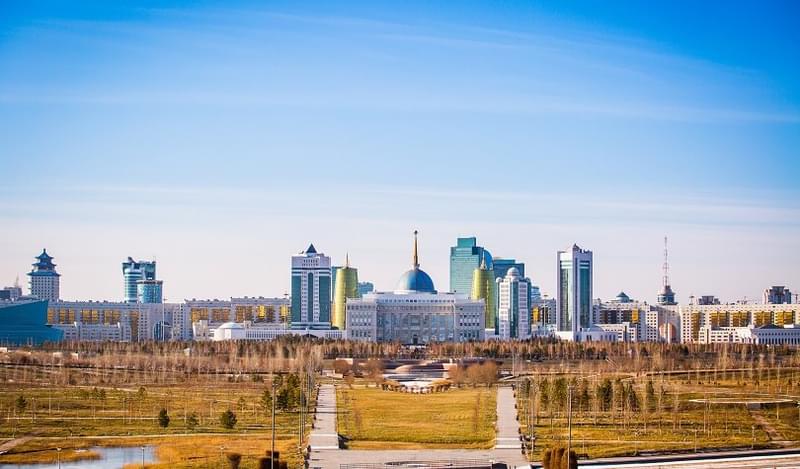The general outlook on Kazakhstan’s economy is positive. The European Bank for Reconstruction and Development (EBRD) has forecast the country’s economy to grow 2.4% in 2017, a significant improvement from the modest 1% growth recorded last year. But its troubled financial system could prove to be a hindrance on the country’s positive economic momentum.
Kazakh banks have been struggling since the 2008 financial crisis, mostly due to weak balance sheets and surging non-performing loans, coupled with years of low oil prices, the country’s main export. The situation has become so delicate that policymakers fear the collapse of the country’s largest financial institutions could trigger a chain reaction that could precipitate a full-blown financial crisis.
There seems to be strong reason for concern. According to official data, around 12% of the US$80bn assets held by Kazakh banks are not-performing loans, while Moody’s research suggests up to one-third of the loans on banks’ balance sheets are “distressed.”
Policymakers have been pushing for a series of mergers and acquisitions in order to strengthen the health of the country’s financial sector – the most significant of which will see Halyk Bank, the third largest Kazakh lender, acquire Kazkommertsbank (KKB); the deal will make Halyk the largest lender in Central Asia and give it control of almost 40% of the country’s financial assets.
KKB has suffered in recent years after overextending its balance sheet to troubled corporates and other financial institutions including BTA, a former bank turned distressed asset manager, where half of the lender's assets are tied up – approximately US$15.7bn. Today, around 50% of KKB’s loan portfolio is made up of toxic loans.
A possible failure at KKB could create an earthquake underneath the country’s financial system, which the government seems determined to avoid; that will come at a cost.
“Public money will be needed to clean up KKB’s balance sheet,” Egor Fedorov, a senior credit analyst at ING Banks explained.
Before Halyk Bank, which is jointly owned by the president’s daughter Dinara Nazarbayeva and her husband, injects the much-needed capital into KKB, the troubled lender will need to dispose of some US$7bn in toxic assets, which the government is set to buy through the state-owned ‘bad bank’, the Problem Loans Fund.
The country’s authorities had previously announced they would inject KZT2tn (US$6bn) into the Problem Loans Fund, a 600% increase on its current US$1bn capitalisation levels, to help buy up more troubled assets from local banks.
For Clemente Capello, Chief Investment Officer at Sturgeon Capital, this should not be mistaken for a full-blown bailout.
“State money has played a role as a backer rather than as an actor, which is probably for the best,” Capello said.
The marriage of KKB and Halyk may be the most significant deal in the pipeline, but it is not the only one. A merger between Tsesnabank and BankCenterCredit, said to be in the works, would create the country’s second-largest lender after Halyk-Kazkommertsbank. Capital Bank and Tengri Bank, two smaller banks, signed a memorandum of intention to merge, with a deal likely to be finalised next year.
Are Mergers Enough?
While the government, following the advice of the IMF, believes that solidifying the country’s financial system is the best way to avert a possible crisis, some analysts question if this will be enough to save the system in the long term.
“The mergers will help stabilize the economy, for now, however in the long run, it will depend on different factors,” Fedorov explained.
The government will need to accompany these mergers with new regulatory measures aimed at deepening monitoring of the financial system and improving the health of banks’ capital if it is to succeed in stabilizing the financial system in the long run.
“The banks need to be more transparent, and the regulators will need to tighten the supervisions and controls over the banks.”
While the economic outlook for Kazakhstan is positive, its sensitivity to global economic shifts – particularly among its neighbours – and oil price volatility means any recovery in the country’s banking sector will require fairly prolonged macro stabilisation.
Castellano agrees that more measures will be required to stabilise the country’s banks and restore credit growth.
“The banking sector needs a positive cycle and adequate management. While lending has started to pick-up, and a reduction in non-preforming loans and in funding levels is taking place, management at these banks have been reluctant to take on new risks.”
With both the private and public sector counting on the success of these transactions, it will be important for authorities to remember that a deeper reform of the banking sector will be required if they wish to secure a long-term solution for the financial system.









